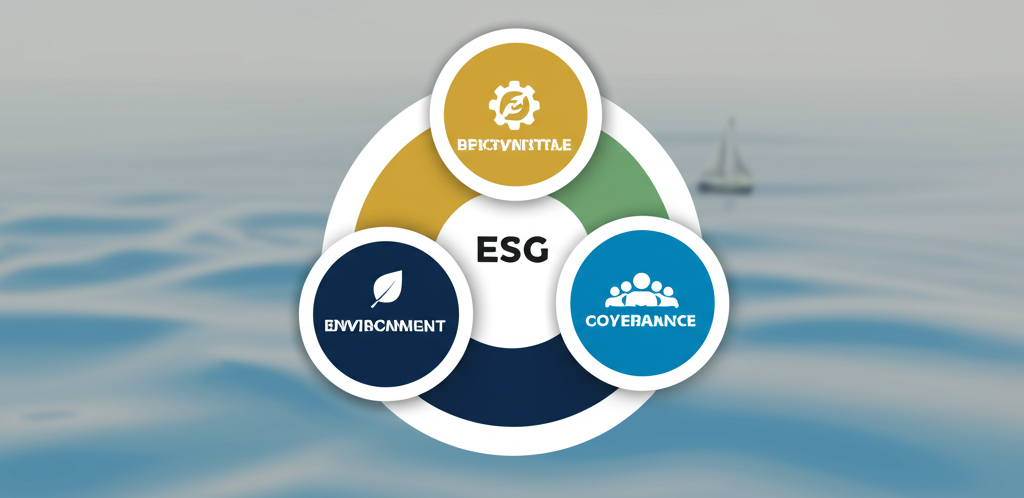Introduction
Shareholder activism is on the rise. Learn how to prepare for and respond to activist campaigns effectively. This comprehensive guide explores the critical aspects of Investor Relations, providing actionable insights for investor relations and financial communications professionals.
In today's fast-paced financial markets, effective investor relations strategies are more important than ever. Companies that can clearly articulate their value proposition, strategic vision, and financial performance tend to be rewarded with higher valuations and more stable investor bases.
This article will walk you through the key challenges, best practices, and implementation strategies for investor relations, with real-world case studies and practical resources to help you excel in this critical area.
Key Challenges in Investor Relations
Before diving into solutions, it's important to understand the common challenges that companies face when dealing with investor relations:
- Regulatory Complexity: Navigating the evolving landscape of disclosure requirements and compliance standards.
- Information Asymmetry: Bridging the knowledge gap between company insiders and external stakeholders.
- Market Volatility: Maintaining consistent messaging during periods of market turbulence or company-specific challenges.
- Stakeholder Diversity: Addressing the varied information needs of different investor groups, analysts, and media.
- Digital Transformation: Leveraging new communication channels while maintaining message consistency.
These challenges are not insurmountable, but they require a strategic approach and careful planning. Let's explore how leading companies are addressing these issues through proven best practices.
Best Practices
Based on our research and experience working with successful public companies, we've identified these key best practices for effective investor relations:
1. Develop a Clear, Consistent Messaging Framework
Create a comprehensive messaging framework that clearly articulates your company's investment thesis, strategic priorities, and key performance indicators. This framework should be:
- Consistent across all communication channels
- Aligned with your company's strategic plan
- Understandable to both sophisticated and retail investors
- Supported by relevant data and examples
For more on developing effective messaging frameworks, see our guide on Creating Annual Reports That Tell Your Story.
2. Prioritize Transparency and Proactive Communication
In today's information-rich environment, transparency is non-negotiable. Companies that proactively share information—even when the news isn't positive—tend to build stronger credibility with investors over time.
This approach is particularly important during challenging periods, as discussed in our article on Crisis Communications: Responding to Negative News.
3. Leverage Multiple Communication Channels
Effective investor relations requires a multi-channel approach that might include:
- Quarterly earnings calls and presentations
- Investor days and conferences
- One-on-one meetings with key investors
- Digital channels including your IR website and social media
- Traditional and digital media engagement
For insights on digital strategies, see our article on Digital IR Strategies for the Modern Public Company.
4. Prepare Thoroughly for All Investor Interactions
Whether it's an earnings call, investor conference, or media interview, thorough preparation is essential. This includes:
- Anticipating difficult questions
- Preparing concise, clear responses
- Rehearsing delivery and presentation
- Ensuring alignment among all company spokespersons
Learn more about effective preparation in our guide on How to Prepare for a Successful Earnings Call.
5. Measure and Refine Your Approach
Effective investor relations is an ongoing process that requires continuous measurement and refinement. Key metrics might include:
- Analyst coverage and sentiment
- Investor feedback and engagement
- Message penetration in media coverage
- Website traffic and engagement statistics
- Relative valuation compared to peers
Case Studies
Let's examine how leading companies have implemented effective investor relations strategies:
Case Study 1: Technology Sector Transformation
A mid-cap technology company was undergoing a significant business model transformation from hardware to software-as-a-service. The challenge was communicating this shift to investors who had historically valued the company based on hardware metrics.
Approach: The company developed a comprehensive investor education program that included:
- A dedicated investor day focused on the transformation strategy
- New KPIs that highlighted the growing recurring revenue streams
- Case studies showcasing successful customer transitions
- Regular progress updates during quarterly earnings calls
Result: Over 18 months, the company's valuation multiple expanded by 40% as investors gained confidence in the transformation strategy.
For more technology sector insights, see our case study on Technology Earnings Strategy.
Case Study 2: Financial Services Reputation Management
A financial services firm faced reputation challenges following regulatory issues. Investor confidence was low, and the stock was trading at a significant discount to peers.
Approach: The company implemented a reputation rebuilding strategy that included:
- Transparent communication about remediation efforts
- Regular updates on compliance improvements
- Executive accessibility to key investors and analysts
- Proactive media engagement to reshape the narrative
Result: Within two years, the company's reputation scores improved significantly, and its valuation gap versus peers narrowed by 65%.
Learn more in our detailed case study on Financial Services Reputation Management.
Implementation Strategies
Implementing effective investor relations practices requires a structured approach:
1. Assess Your Current Position
Begin with a comprehensive assessment of your current communication effectiveness:
- Audit existing materials and messaging
- Gather feedback from investors and analysts
- Benchmark against industry peers
- Identify gaps and opportunities for improvement
2. Develop a Strategic Plan
Based on your assessment, create a strategic plan that includes:
- Clear objectives and key performance indicators
- Messaging framework and key themes
- Calendar of planned communications and events
- Resource requirements and responsibilities
3. Build Internal Alignment
Effective external communication begins with strong internal alignment. Ensure that:
- Key executives are aligned on messaging and strategy
- Cross-functional teams understand their roles in the communication process
- Proper approval processes are in place for external communications
- Regular internal updates maintain alignment as business conditions evolve
4. Execute with Discipline
Consistent execution is critical to building credibility:
- Maintain message consistency across all channels
- Adhere to disclosure regulations and best practices
- Respond promptly to investor and analyst inquiries
- Proactively address emerging issues or concerns
5. Measure, Learn, and Adapt
Continuously evaluate the effectiveness of your communications and refine your approach:
- Track key metrics against established goals
- Solicit regular feedback from key stakeholders
- Analyze peer communications for new ideas and approaches
- Adjust strategies based on changing market conditions or company developments
Tools and Resources
To support your investor relations efforts, consider these valuable tools and resources:
Investor Relations Platforms
- IR Website Solutions: Specialized platforms for creating and managing investor-focused websites with regulatory compliance features.
- Earnings Call Platforms: Services that facilitate webcasts, transcription, and archiving of earnings calls and investor events.
- Investor CRM Systems: Tools to track investor interactions, manage targeting, and analyze ownership patterns.
Research and Intelligence
- Ownership Intelligence: Services that provide insights into your shareholder base and ownership trends.
- Perception Studies: Research that captures investor and analyst perceptions of your company.
- Competitive Intelligence: Tools to monitor peer communications and market positioning.
Professional Development
- IR Associations: Organizations like NIRI (National Investor Relations Institute) that provide education and networking.
- Communication Training: Programs focused on media training, presentation skills, and crisis communications.
- Financial Certification: Credentials like the CFA or IRC (Investor Relations Charter) that enhance credibility.
IR.getfeatured.org Resources
Explore our comprehensive resources to support your investor relations efforts:
- Digital IR Strategy Guide: A complete framework for digital investor communications.
- Earnings Call Best Practices: Detailed guidance for planning and executing effective earnings calls.
- Crisis Communications Playbook: Essential strategies for managing communications during challenging periods.
Conclusion
Effective investor relations is both an art and a science. It requires strategic thinking, disciplined execution, and continuous refinement based on feedback and results.
By implementing the best practices and strategies outlined in this guide, you can enhance your company's communication effectiveness, build stronger relationships with key stakeholders, and ultimately support fair valuation in the market.
Remember that investor relations is an ongoing journey, not a destination. Market conditions, stakeholder expectations, and communication channels will continue to evolve, requiring adaptability and innovation.
For personalized guidance on developing and implementing effective investor relations strategies for your company, contact our team of experts at IR.getfeatured.org.






